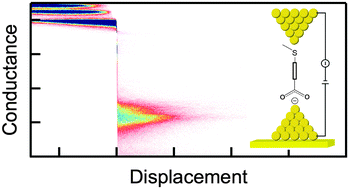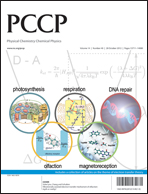Electronic transport and mechanical stability of carboxyl linked single-molecule junctions
Abstract
We characterize electron transport across Au–molecule–Au junctions of heterogeneous carboxyl and

- This article is part of the themed collection: Electron Transfer Theory

 Please wait while we load your content...
Please wait while we load your content...